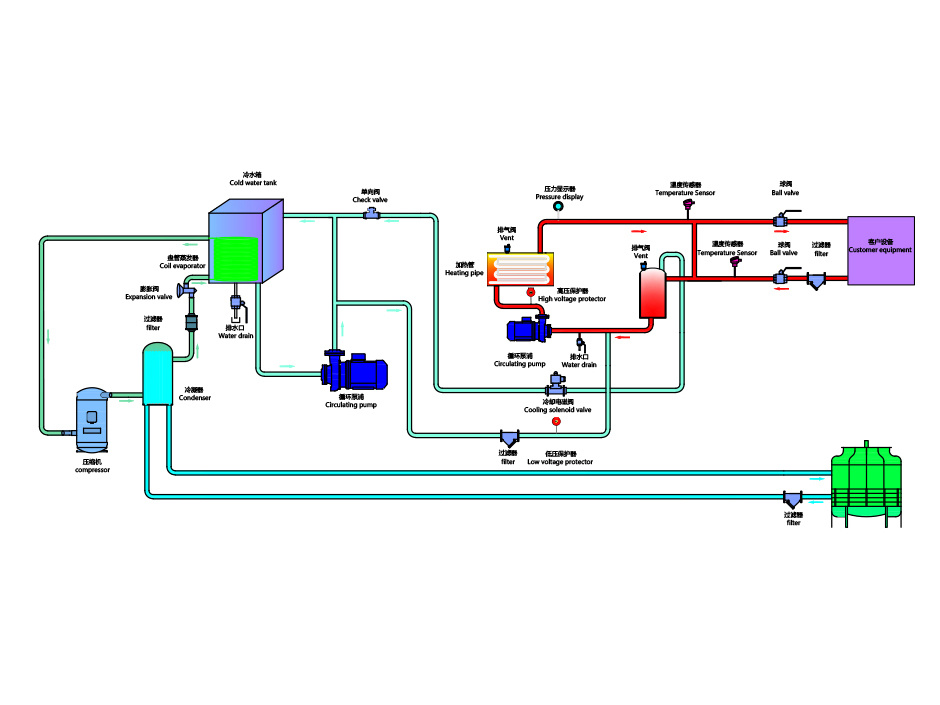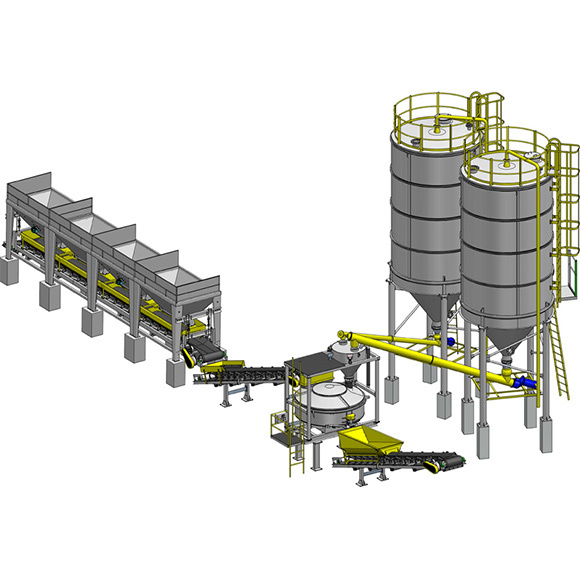News detail
Exploration of LSR Forming Measurement and Mixing System
2023-04-18
Liquid silicone rubber (LSR) is a two component reactive chemical with a certain viscosity and consistency similar to that of a paste. Before forming, the A&B components of LSR will be transported to users in 20 liter barrels, 200 liter barrels, or some small disposable plastic cylinders of medical grade silicone.
During the molding process, the A&B components of LSR are mixed in a 1:1 ratio, resulting in a chemical reaction that transforms from liquid to solid under thermal acceleration. The mixer is the first mechanical device in the molding process, followed by the injection molding machine and injection mold.
LSR feeding device
The role of the metering mixing system
The main function of the metering mixing device is ratio control, which means that accurately measured 1:1 (or 50:50) A&B materials are transported proportionally to the feed port of the injection machine. Even if there is a slight deviation in the mixing ratio, the LSR formed product can still produce good curing properties (such as hardness, tear strength, and tensile strength). For example, the curing characteristics of LSR are usually the same at a ratio of 52:48 or 48:52 as at a ratio of 50:50.
Nevertheless, we still hope that the metering mixer can produce the desired 50:50 ratio within ± 1%. This is because when we purchase raw materials, the purchase quantity of A&B components is generally equal, so any remaining components caused by inaccurate measurement will be wasted. Variable ratio control can be used to compensate for differences in viscosity between A&B components.
The second key function of the metering mixing system is to maintain the cleanliness of the product. The LSR molding process is theoretically very clean, as all chemicals during the molding process are sealed in a closed system. The ambient air, dust, and moisture will not come into contact with the product. Therefore, the metering mixing system cannot generate additional pollutants. Its metal parts must be corrosion-resistant to prevent rusting. For medical applications, the metal in contact with the material should use sanitary grade materials, such as stainless steel of grade 316 or above. Material hoses should be lined with polytetrafluoroethylene or nylon, as traditional rubber lined hydraulic hoses may contain sulfur, which can contaminate silicone and inhibit curing. PTFE lined hoses are particularly suitable for medical applications. When forming implantable medical components or components that come into contact with blood or drugs, the purity of silicon is a particularly important indicator.
The third function of the metering mixing system is to introduce secondary components such as colorants, fungicides, etc. The metering mixer should be able to add the third and fourth components at the required ratio and accuracy when needed.
Fourthly, the metering mixing system must thoroughly mix the A&B components and a small amount of the third and fourth components, and then accurately deliver them to the injection molding machine according to the required amount.
Fifthly, the metering mixer must be able to supply the mixed liquid silicone to the injection machine barrel at a constant pressure. In each cycle, a consistent supply pressure will fill the barrel with the same volume and pressure of material, resulting in repeatability of injection volume size. This is particularly important because liquid silicon, like thermoplastic materials, has certain compressibility.
Basic components of a metering mixing system
The distribution of high viscosity LSR materials requires the use of a pressure plate pump and related components. The pressure plate pump is provided with the required pressure by a plunger driven by pneumatic, electric, or hydraulic pressure, which enters the material container through the pressure plate and pressurizes the silicone under the pressure plate. The pressure forces viscous silicone into the flow channel at the center of the pressure plate and is transported out through the lower rigid body of the pump. The sealing ring on the pressure plate can effectively prevent material leakage and prevent pollutants from entering the container.
Hoses for A&B and other components transport materials from the metering pump to the manifold assembly. The manifold is equipped with a check valve for each component to prevent backflow, which will leave vulcanized rubber in the hose. The check valve also isolates the manifold pressure from the individual pump pressure, which is very useful in monitoring pump performance.
The system should include a static mixer. Although the injection screw has a certain mixing effect, it is best to mix the material well before it enters the screw. The third and fourth may also require additional mixing.
The water-cooled jacket can be used for all components in the mixture flow except the screen components.
Two types of systems
There are currently two types of metering hybrid systems on the market: direct and transfer hybrid. The metering pump draws liquid from the drum and meters it to the manifold and mixer assembly through a hose.
For direct systems, the only wetted components are the following plates, pumps, hoses, manifolds, mixers, and possibly precision flow meters. This type of machine requires the least amount of wet parts to clean when replacing materials. Most specialized 5-gallon machines are of this type as they are typically used in situations where materials are frequently changed.
Whether using a 5-gallon or 55-gallon machine, the direct design can provide the fastest and most economical material replacement performance. In the simplest form, the same A&B metering pumps are mechanically connected together and driven by an air motor to produce a 1:1 ratio (as shown in the following figure).
5 gallon direct metering mixing system
The following figure shows a more powerful direct system. The A&B ratio control is achieved by pumping liquid through a precision flow meter. The signal from the flowmeter is processed by a programmable logic controller to maintain a 1:1 ratio. The ratio control is closed-loop because the control circuit adjusts the pump speed based on the actual flow detected by the flow meter.
System with closed-loop proportional control
The system has added a linear sensor to measure the liquid level position of the material barrel, providing data on the residual amount of A&B components in the barrel. This data can be used for proportion fine-tuning to simultaneously use up the materials in the AB component and avoid waste.
The transmission hybrid system does not use precision flow meters. Instead, instruments and optical encoders are installed on each pump to track its stroke. Then, the control system prompts the A&B pumps to achieve a 1:1 ratio through the same stroke cycle. This system is suitable for abrasive silicone, which can cause rapid wear of the flow meter.
There are two significant issues with direct systems:
One is that the mixture pressure at the feed throat changes with the pump's up and down circulation. A pressure regulator needs to be installed to stabilize the material pressure.
Secondly, when using a system to feed two injection molding machines, the press machine must be interlocked so that only one injection molding machine can be fed at a time. Chest pain cannot guarantee the ratio of two feeding points at the same time. If an injection machine must wait for the opportunity to fill separately, there may be some productivity loss.
In the mixed design of conveying, the conveying and metering system, as well as the conveying pump, are all located in the pressure plate system. They can measure and transport materials of A&B components separately, without mutual influence or interference. The metering device is a double set single acting piston pump, usually driven by a regular cylinder or servo motor to provide a fixed 1:1 ratio. The metering chamber is filled during the retraction stroke and distributed during the extension stroke. Due to the very simple mechanical structure of metering pumps, they generate the same pressure at each extended stroke. Under appropriate control, the mixture pressure at the feed inlet will be repeated within 1 to 2 atmospheres, sufficient for any injection molding. This design does not require a material regulator, which can save maintenance and cleaning time and costs when replacing materials. The pressure of the feed throat can be programmed and adjusted on the operation interface of the conveying and metering system.
Transfer mixing system
When production requires two or more injection molding machines to supply materials from one conveying pump, a measuring device can be placed on each press machine. Since each measuring device operates independently, the injection molding machine does not require electrical interlocking. If two barrels are fed simultaneously, the mixing ratio at both positions will be accurate.
The following figure shows the conveyor mixing device with automatic pressure plate replacement. When one of the materials is used up, the operator does not need to be present to replace the barrel. This eliminates the downtime for replacing the material barrel and helps with unmanned molding.
Conveying hybrid systems are typically used for longer continuous operation scenarios. Compared to direct systems, it takes longer to replace materials and wastes more silicone, making direct systems more practical in the short term.
Adding pigments and additives
Pigments and self releasing liquids are the most common LSR additives. The addition ratio is usually between 0.5% and 5% of the volume of A&B components. The measurement accuracy requirement is ± 0.2%.
Generally, two forms of additive metering pumps are used. The following figure shows a mechanical metering pump, where the stroke length of the pump can be manually adjusted to change the metering percentage. The pump and feed tank are located on the A-B metering device, and the pigment is transported to the mixing manifold through a hose.
Mechanical metering pump
The second type of metering pump is called a color syringe, as shown in the following figure. It is mechanically independent of the A-B metering pump and installed on the static mixer. Injectors typically use a small diameter plunger driven by a cylinder to inject small and precise pigments into the mixer. Compared to the volume of A-B, the size and frequency of injection determine the percentage of pigment.
Color syringe
The operator inputs the mixing size and required color percentage on the electronic screen, instead of manually adjusting the machine using a mechanical pump.
In addition to easy adjustment of the ratio, this metering pump is also easier to clean to adapt to color changes. Additionally, when feeding two injection molding machines simultaneously, only this metering pump can be used.
RELATED NEWS
For special processes, customers require temperature control for multiple equipment or several different processes (formulas) in a production process, requiring precise control of multiple different temperatures.
The hot and cold oil switching mold temperature machine is a non-standard equipment that includes two parts: the heating part and the cooling part. It needs to be customized according to specific needs from the mold temperature machine manufacturer. A high-precision and highly reliable temperature control system is adopted to achieve automatic circulation of heating and cooling processes, and can achieve precise control and switching of heating and cooling temperatures.
Exploration of LSR Forming Measurement and Mixing System
Liquid silicone rubber (LSR) is a two component reactive chemical with a certain viscosity and consistency similar to that of a paste. Before forming, the A&B components of LSR will be transported to users in 20 liter barrels, 200 liter barrels, or some small disposable plastic cylinders of medical grade silicone.

Do you have any questions?
If you have any questions, please follow our continuous updates!
CONTACT >这里是标题一h1占位文字
A professional manufacturer dedicated to planning the entire plastic molding automation peripheral auxiliary system for the entire factory.
© Copyright 2023 Jiangxi Danlead Advantages Machinery Technology Co., Ltd Powered by www.300.cn SEO Supports IPV6


 语言选择
语言选择 








